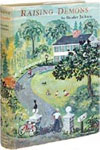[MILITARY SAMIZDAT ? SOVIET DEMOBILIZATION ALBUM] Soviet Demobilization Album of a conscript serving 1976?1978 in KZPO: Krasnoznamennyi Zapadnyi Pogranichnyi Okrug [Red Banner Western Border District KGB Border Guard].
From
Penka Rare Books and Archives, ILAB, Berlin, Germany
Seller rating 5 out of 5 stars
![]()
AbeBooks Seller since December 15, 2023
About this Item
Description:
Oblong folio (29.7 × 41 cm). Dark blue stab-sewn buckram photo-album, with front wrapper decorated with felt, paper, and foil appliques; eleven unnumbered card leaves lacquered and decorated to rectos and versos with photographs, postcards, drawings, and appliques, interleaved with translucent calques, with original stencilled illustrations in colour. Wrapper edges lightly rubbed, else very good. Unique samizdat album chronicling the years in service of a Soviet conscript, Vladimir Mikhailovich Savchenko from Kyiv Oblast, in the Red Banner Western Border District KGB Border Guard (KZPO), responsible for protecting the Western border of the USSR. Dembel albums, or demobilisation albums, were a type of military samizdat closely linked to scrapbooking, and were enormously popular among Soviet conscripts serving as ?personal mementos documenting a kind of ?journey to manhood?? Savchenko?s army summons dated 1976 are included on the second page of the album, followed by pasted-in photographs showing Savchenko with other conscripts during military training, on duty in Western borderlands of the USSR, and eating and relaxing together in the barracks. The felt cut outs, highly individualised backdrops, intricate and sometimes even multicoloured stencils and prints on the translucent paper, demonstrate a great deal of care in the making of the album, and make clear an aesthetic preoccupation with the preservation of the memory of Savchenko?s time in the army. The final page of the album includes the names and addresses of ?druzia po sluzhbe? [friends during service], including names of conscripts from far flung regions such as Abkhazia, Penza, Volgograd, Grozny, and Kharkiv. Despite their ubiquity and popularity, dembel albums were strictly forbidden in the army. Command-approved graduation albums with official photographs were handed out to demobilised soldiers instead. Nevertheless, and in spite of the danger of being caught, conscripts would start planning their handmade albums well in advance of their demobilisation, and would often go to great lengths to hide them from their commanding officers. The occasional use of photographs with military equipment and technology was one of the reasons for the prohibition on the albums. This genre of samizdat has been noted also for being the physical manifestation of ?the infamous four-class system of dedovshchina? or ritual hazing, within the Soviet army. Within the prison-like conscript hierarchy, ?dukhi? [spirits], new conscripts in the first six months of their service, were at the bottom of the social ladder, and ?dedy? [grandfathers], those in the second year of service, at the top. The hazing involved humiliation and torture, but was condoned by commanding officers purportedly because it helped them maintain discipline. Art historian Agn? Naru?yt? writes: ?Making the album was also a task given to subordinate soldiers who had the required skills. For example, Lithuanian artists who served in the Soviet Army told me that they did not make albums for themselves, but only for others, thus buying peace and privileges. They would draw caricatures, portraits from photographs of soldiers, or women from the magazine Ogonek who were presented as the soldiers? sexual victories. [?] Therefore, the splendour of the albums demonstrates not so much the owner?s creativity, but his power over artists serving in the army. In fact, the making of the albums was a form of abuse, because soldiers were forced to mock their own suffering. Millions of albums were thus produced, documenting a reality that did not exist? See: ?The Soldier?s Diary. A Record of Erased Time? in Ann Murray ed. Constructing the Memory of War in Visual Culture Since 1914). Presented as a subcultural phenomenon, an exhibition of such albums ?Dembel Album ? Russian Art Brut between subculture and artist?s book? was held at the Anna Akhmatova museum in St. Petersburg in 2001. Seller Inventory # 54009
Bibliographic Details
Title: [MILITARY SAMIZDAT ? SOVIET DEMOBILIZATION ...
Binding: Soft cover
AbeBooks offers millions of new, used, rare and out-of-print books, as well as cheap textbooks from thousands of booksellers around the world. Shopping on AbeBooks is easy, safe and 100% secure - search for your book, purchase a copy via our secure checkout and the bookseller ships it straight to you.
Search thousands of booksellers selling millions of new & used books
New & Used Books
New and used copies of new releases, best sellers and award winners. Save money with our huge selection.
Rare & Out of Print Books
From scarce first editions to sought-after signatures, find an array of rare, valuable and highly collectible books.





